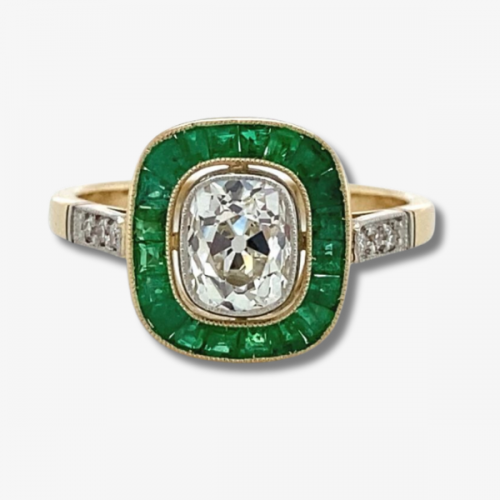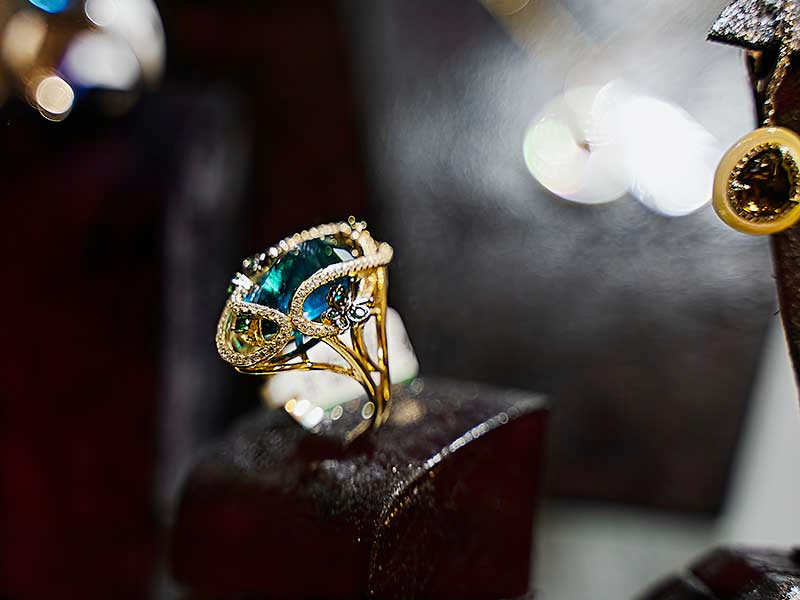Why Estate Jewelry Austin TX is the Best Choice for Luxury and Value
Why Estate Jewelry Austin TX is the Best Choice for Luxury and Value
Blog Article
Discover the Rich History Behind Stunning Estate Fashion Jewelry Collections
The expedition of estate jewelry collections provides a special home window into history, exposing the complex relationship between craftsmanship and cultural evolution (estate jewelry austin). Each piece is not merely a testament however an adornment to the artistic movements and societal values of its time, from the elaborate details of the Victorian era to the streamlined elegance of the Mid-Century Modern. As we check out these impressive artefacts, we uncover stories that go beyond generations, motivating us to think about not just their charm, but the lives they have touched and the moments they have observed. What keys might these collections still hold?
The Beginnings of Estate Fashion Jewelry
How did estate jewelry involved symbolize the abundant history and artistry of past ages? The beginnings of estate fashion jewelry can be mapped back to different periods of workmanship, where fashion jewelry was not merely an accessory yet a reflection of societal values, technical innovations, and artistic expressions. Each item tells a tale, typically related to the lives of their previous proprietors, encapsulating individual stories alongside historic contexts.
The term "estate fashion jewelry" usually refers to previously owned items, frequently from considerable periods such as Victorian, Art Nouveau, or Art Deco. These pieces were produced with thorough interest to detail, showcasing the skill of artisans that made use of products like gold, silver, and precious gems. Unlike modern precious jewelry, estate items frequently feature one-of-a-kind layouts that highlight the visual appeals of their time, hence working as tangible links to the past.

Significant Style Ages
Throughout history, several remarkable layout ages have substantially influenced the development of estate jewelry, each identified by distinctive styles, materials, and social contexts. The Georgian age (1714-1837) marked the beginning of intricate layouts, usually featuring nature-inspired motifs and making use of products like gold, silver, and gems established in sophisticated settings. Following this, the Victorian period (1837-1901) introduced charming themes, with nostalgic jewelry and innovative strategies such as using enamel and cameos.
The Art Nouveau duration (1890-1910) commemorated organic types and the charm of nature, making use of products like opals and pearls in streaming designs. This was done well by the Art Deco era (1920-1939), which welcomed geometric patterns, strong shades, and extravagant products such as platinum and rubies, reflecting the modernist spirit of the moment.
The Mid-Century Modern era (1940-1960) showcased streamlined layouts and making use of unconventional products, emphasizing minimalism and capability. Each of these eras not just reflects the creative activities of their time however additionally encapsulates the social values and technical advancements that formed precious jewelry style, making them a remarkable subject for collectors and chroniclers alike.

Famous Estate Jewelry Collections
The rich history of estate jewelry is magnificently exemplified by a number of prominent collections that showcase the creativity and workmanship from numerous design eras. One of the most famous is the Cartier Collection, which mirrors the deluxe click to find out more and innovation of the renowned French jewelry expert. Parts from this collection usually feature exquisite gemstones and intricate designs, highlighting the brand's commitment to great workmanship.
An additional notable collection is the Duchess of Windsor's jewelry collection, which comprises several distinctive pieces, including the famous "Windsor" arm band. This collection not just exemplifies the sophistication of the Art Deco period however likewise brings a rich narrative of love and loss, as it belonged to Wallis Simpson, who famously married Edward VIII.
The collection of the late actress Elizabeth Taylor also stands out in the realm of estate jewelry. With many pieces developed by popular jewelers like Bulgari and Cartier, her collection embodies prestige and refinement, emphasizing her individual design and fondness for special gemstones.
These famous estate jewelry collections act as a testimony to the enduring allure of great precious jewelry, using understanding right into the cultural reference and artistic activities that formed their production.
The Social Significance
Estate jewelry collections hold profound cultural relevance, showing not just the aesthetic worths of their particular eras yet likewise the social and historic contexts in which they were created. Each item typically embodies the workmanship and creative fads of its time, showcasing the development of design and technology in precious jewelry making.
Moreover, these collections function as tangible links to social customs and routines. As an example, wedding celebration bands and treasure breastpins may signify love and familial bonds, while pieces embellished with particular gems can represent social or regional identities. The materials utilized-- whether gold, silver, or gemstones-- typically inform stories of trade, expedition, and the wide range accumulation of cultures.
Additionally, estate jewelry can function as historic artefacts, offering understandings right into the lives of individuals and the societal norms they browsed. The way fashion jewelry was put on and valued can disclose much about gender functions, condition, and individual expression within differing social landscapes. Estate jewelry transcends mere ornamentation, acting as a rich narrative of human experience, artistry, and cultural heritage, inviting contemporary audiences to engage with the past in a meaningful way.
Caring for Your Estate Parts
Looking after estate precious jewelry pieces requires a thoughtful approach to ensure their longevity and maintain their one-of-a-kind features. To keep the charm of these prizes, it is necessary to manage them with care. Constantly clean estate jewelry making use of a soft, lint-free towel after each wear to eliminate oils and dust. For deeper cleaning, make use of a mild soap service and a soft brush, taking care to avoid rough chemicals that might damage delicate products.
Storage is equally vital; store pieces independently in a fabric-lined box to stop scraping and tangling. Take into consideration utilizing anti-tarnish pouches or towels for silver items, as this aids to reduce the tarnishing procedure. Furthermore, avoid subjecting jewelry to extreme moisture, severe temperatures, or straight sunlight, which can detrimentally impact steels and gemstones.
Routine inspections are critical. Look for loose rocks, used clasps, or harmed setups, and seek specialist repair work when required. Consulting a jewelry expert experienced in vintage or antique pieces can give specific treatment options. By carrying out these practices, collection agencies can maintain their estate jewelry's historic and aesthetic worth, guaranteeing these items proceed to be cherished for generations to find.
Final Thought
To conclude, the expedition of estate jewelry collections exposes a tapestry of imaginative expression and cultural importance, showing the worths and aesthetics of various historical periods. When possessed them, each item offers as a testimony to phenomenal workmanship content and the stories of those that. Recognizing the beginnings, layout eras, and significant collections improves recognition for these artifacts, highlighting their function in maintaining social heritage and motivating ongoing stewardship and treatment for these exceptional treasures.
The expedition of estate precious jewelry collections supplies an one-of-a-kind home window right into history, revealing the detailed partnership in between craftsmanship and cultural evolution. The beginnings of estate fashion jewelry can be traced back to various durations of workmanship, where fashion jewelry was not merely an accessory however a reflection of social values, technological advancements, and imaginative expressions.The term "estate fashion jewelry" usually refers to used items, commonly from considerable eras such as Victorian, Art Nouveau, or Art Deco.The abundant history of estate jewelry is magnificently exemplified by numerous distinguished collections that showcase the creativity and craftsmanship from numerous style eras.In final thought, the exploration of estate fashion jewelry collections reveals a tapestry of imaginative expression and cultural relevance, reflecting the worths and aesthetic appeals of various historic durations.
Report this page